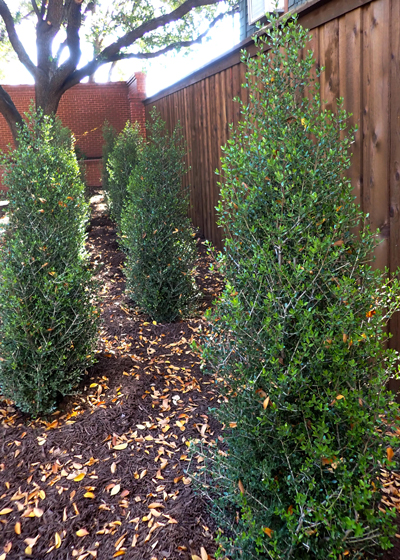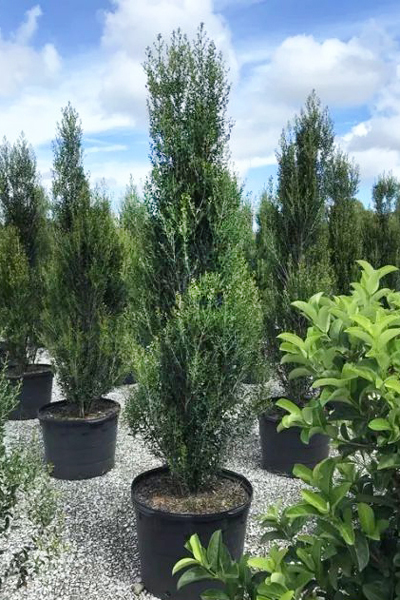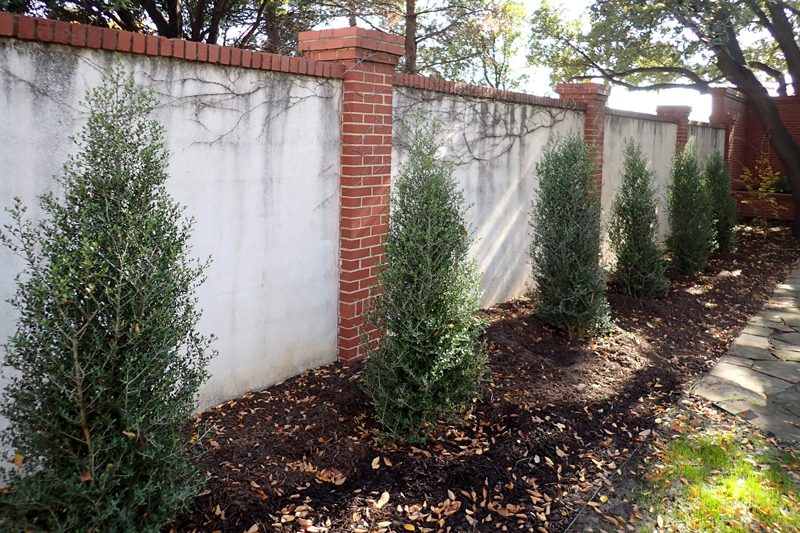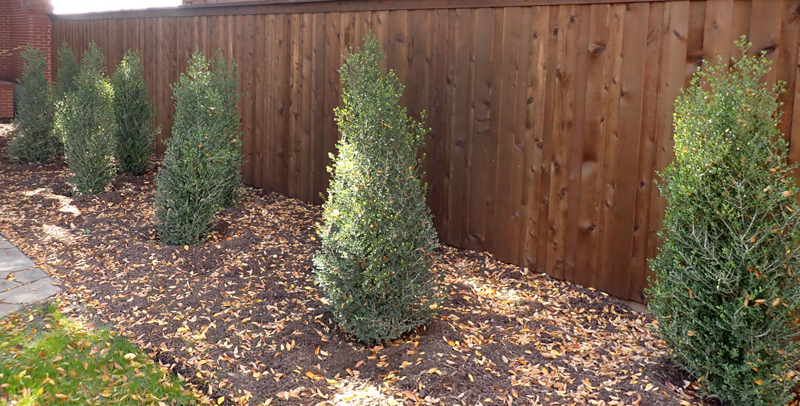Yaupon’s columnar cultivars – by Steve Huddleston
Yaupon holly is a densely branching, broadleafed evergreen shrub or small tree that is used extensively in Texas landscapes and for good reason.
Botanically it’s Ilex vomitoria, and it’s native to the eastern third of Texas and eastward across much of the South.
It’s one of the most useful and versatile shrubs we have, and its cultivars include weeping, columnar and dwarf forms.

We’re going to highlight two of the columnar types, but before we do, let’s outline some general facts about the species.
What you’ll need to know about yaupons…
Scientific name: Ilex vomitoria
Common name: Yaupon holly
Plant Family: Aquifoliaceae
Hardiness Zones: USDA Zones 7a-9b (most of Texas)
Male/female, fruit: Each plant bears either male or female flowers. Only female plants will bear fruit, but male plants will need to be present nearby to ensure pollination. Fruit are small – BB-sized bright red drupes (berries). Yellow types are also available, but other than the novelty, are not as showy.
Native range: Virginia across the southeastern states to Central Texas.
(Note: If you drive I-45 between Corsicana and Houston you will see many miles of yaupon thickets underlaying the post oak and pine forests.)
Lighting requirements: Sun or shade, but plants will be more open when they are grown in shade, more compact and denser in full sun.
Soil preferences: Highly organic and moist soils are best. Does best in neutral or acidic soils, but tolerant of alkalinity.
Size ranges: Dwarf forms grow to 3 ft. tall and 4 ft. wide. Tall standard types grow to 20-25 ft. tall and 20 ft. wide. Weeping types grow to 12 to 16 ft. tall and 14 ft. wide and are visually “heavy” to the eye.
Two upright yaupons of merit…
We have seen several introductions of columnar hollies over the years. One of the earliest was the variety ‘Will Fleming.’ It looked like it might be the answer, but gardeners found that it couldn’t maintain its tight, upright growth form. It was necessary that it be kept tied with spirals of green twine, not a favorite task.

• ‘Scarlet’s Peak’ This upright type has all the fine yaupon traits, even including generous amounts of bright red berries. Keep it trained to maintain the tight growth form.
• ‘Skyward’ Somewhat more pyramidal, this one is really useful. It grows to 15 ft. tall and 6 ft. wide, all with the same fine yaupon foliage and fruit.
Both of these tall hollies can be used for screening and privacy. Spacing will depend on the variety and exact need. All things being equal, ‘Scarlet’s Peak’ will need to be planted closer together because it’s not as wide as it matures. But you may be combining it with other shrubs of other types and widths, so that will need to be considered as well.
Neither of these hollies will have any serious insect or disease problems. You will need to keep them moist at all times as the new plants become established. Their original soil balls will dry out much more quickly than the surrounding native soils.
Both of these will be in short supply in the nursery trade. Wise gardeners will start shopping early. Your local independent garden center may have to order them in for you.
Note: ‘Sky Pencil’ is frequently sold, but it is a hybrid of Ilex crenata (Japanese holly) and not of yaupon. As a result, it struggles with iron deficiency in alkaline soils and will not do well in the western two-thirds of Texas (including major urban areas along I-35).


